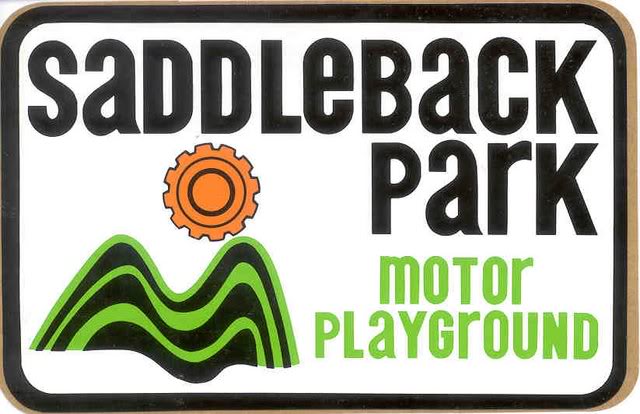The term “sponsorship” meant something very different in the 1970’s than it does today. There were many levels of “sponsorship,” and there were never any contracts. Everything was done on a handshake, and the future support that most riders got was a function of their race results over the last 2 or 3 weeks. If a pro racer had several winning weekends in a row, he could ask for almost anything (parts, repair labor and entry fees). Conversely, if you had several bad weekends in a row, a racer’s capitol shrunk. For this reason, most pro racers continued to race regularly at the local track where they were “king.” This gave them wins they could crow about, and prize money they could use for gas and entry fees at Sunday Saddleback.
Since there were no contracts, pro riders were always shopping for a better deal from another sponsor. Often they found one. Since many racers are not very good diplomats, they would neglect to let us know of the sponsorship change, and simply show up at the races the next weekend on a different bike, wearing a different jersey. It was a a dog-eat-dog world, but that’s just the way it was.
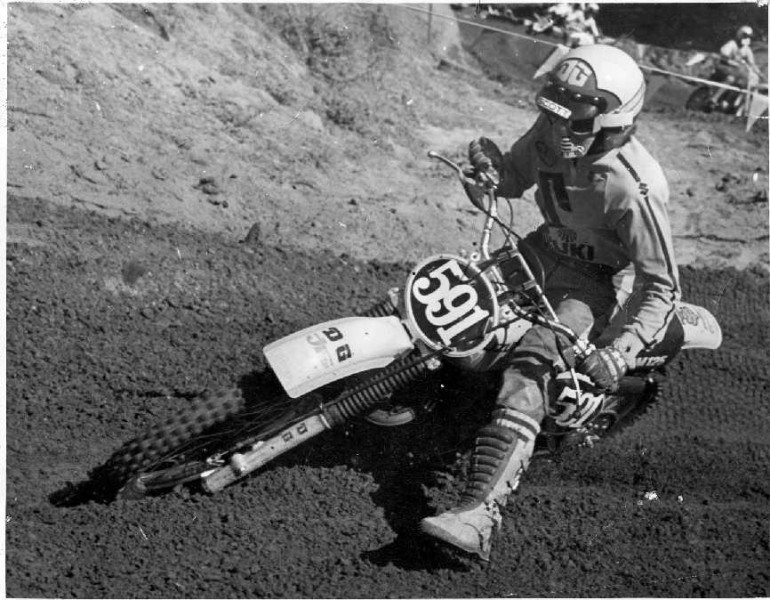 The only pro riders immune from the “results equals support” equation were the “test riders” who raced whatever machine I was doing development on at the time. Every rider wanted this level of sponsorship, but few racers wanted to be racing a bike that was constantly changing. On top of that challenge, a good test rider had to be technically smart, and good at describing changes in the machine. That made the list of candidates very short. Mike Bell was a very good test rider, but he was less interested in testing, and more interested in having a steady 250/open-sponsored ride. In 1977, DG offered that 250/open ride, and Mike used the opportunity to win the much-respected CMC #1 plate that year.
The only pro riders immune from the “results equals support” equation were the “test riders” who raced whatever machine I was doing development on at the time. Every rider wanted this level of sponsorship, but few racers wanted to be racing a bike that was constantly changing. On top of that challenge, a good test rider had to be technically smart, and good at describing changes in the machine. That made the list of candidates very short. Mike Bell was a very good test rider, but he was less interested in testing, and more interested in having a steady 250/open-sponsored ride. In 1977, DG offered that 250/open ride, and Mike used the opportunity to win the much-respected CMC #1 plate that year.
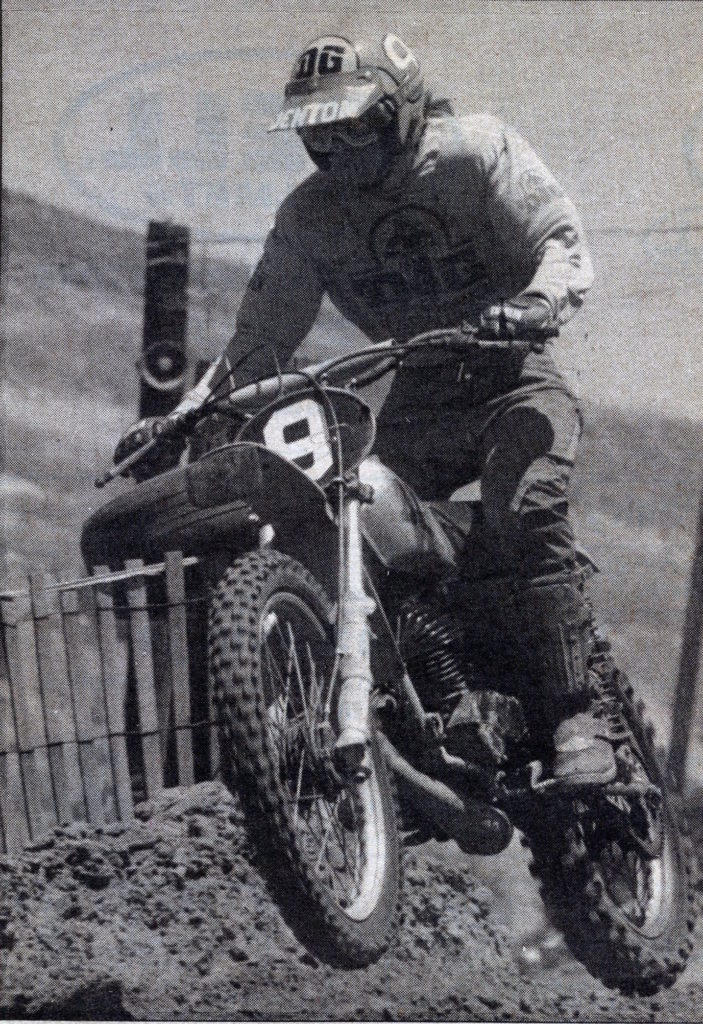
By far my best test rider of the DG years was pro racer Dave Taylor. Dave’s riding talent made every bike he rode look fast, and his input helped me to accelerate development of everything he rode. Dave was easily one of the best riders I worked with who never got a full-factory ride. Very sadly, when his talents were at their peak, all the factories already had full stables of riders. Timing was as important as talent.
While every pro racer dreamed of getting a “full-factory” sponsorship, there were only so many “factory” rides available. Occasionally, a factory would want to give significant help to a particular up-coming racer, but they couldn’t do it officially for political reasons. In such cases, the factories would contact me, and ask to give the bikes and parts to a racer via the DG race team. This happened a lot. These “back-door” sponsorships were common because the cost to the factory was low, and those costs were easy to hide in the manufacturers advertising budget. Additionally, if the back-door ride turned out to be a lucky throw of the dice, the manufacturer could more easily secure an upcoming hero.
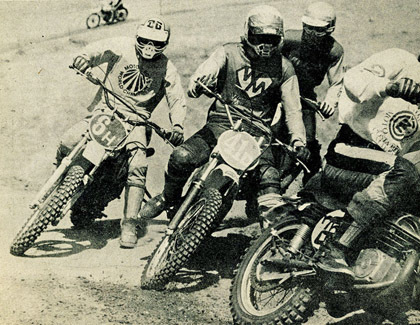
Like team DG, the factories themselves were also struggling to find good test riders who had the riding skills to push machines to the limit, and at the same time, could give them good technical input. When they found such a rider, they would often secure the rider by offering him a two-bike, back-door sponsorship, in addition to paying them a salary to ride all week long. While it sounded like a dream come true for many racers, the end result was often different. The factories used these test riders relentlessly to meet their own manufacturing deadlines. They didn’t care if they “used him up.” Come Sunday Saddleback, these test riders were often so tired from the long week of riding everyday that their Sunday results suffered. There were simply no easy roads to the top for pro racers of the day.
By spring of 1976, the DG race shop was well organized, and race team bikes were darn fast. As expected, we had the usual rider changes that came with a new season. In autumn ‘75 Bob Hannah got a back door Suzuki 250/open ride, and he quickly became dominant at Saddleback in 250 and open pro classes. Our other YZ125 Pros, Davey Williams and Danny Turner, both found other rides that looked more attractive. That left Team DG once again shopping for rider talent. We picked up SoCal local pro Mark Tyer, and a central Cal pro rider, Jim Doman, to ride our team YZ125s in 1976 AMA nationals (as long as budget would permit). Mark was an experienced pro that was tough as nails, and he was “take no prisoners” fast. Jim was a more refined rider, but could put in two strong 45-minute motos without fading.
In late ’75, Gary Harlow agreed to sponsor a newbie pro from San Diego, Broc Glover. Broc’s father, Dick Glover, was easily one of the hardest working and dedicated motocross Dads that I ever encountered. He certainly was a big part of Broc’s privateer successes. Broc himself was only 15 years old at the time, and would not be able to race AMA nationals until he turned 16 later in 1976. Broc looked even less than his 15 years, and the other team riders would relentlessly rib him with “little boy” comments. But when the gate dropped at Saddleback, Broc easily held his own for two 45-minute motos, and the “little boy” jokes quickly disappeared. Broc’s nickname “boy wonder” was very well earned.
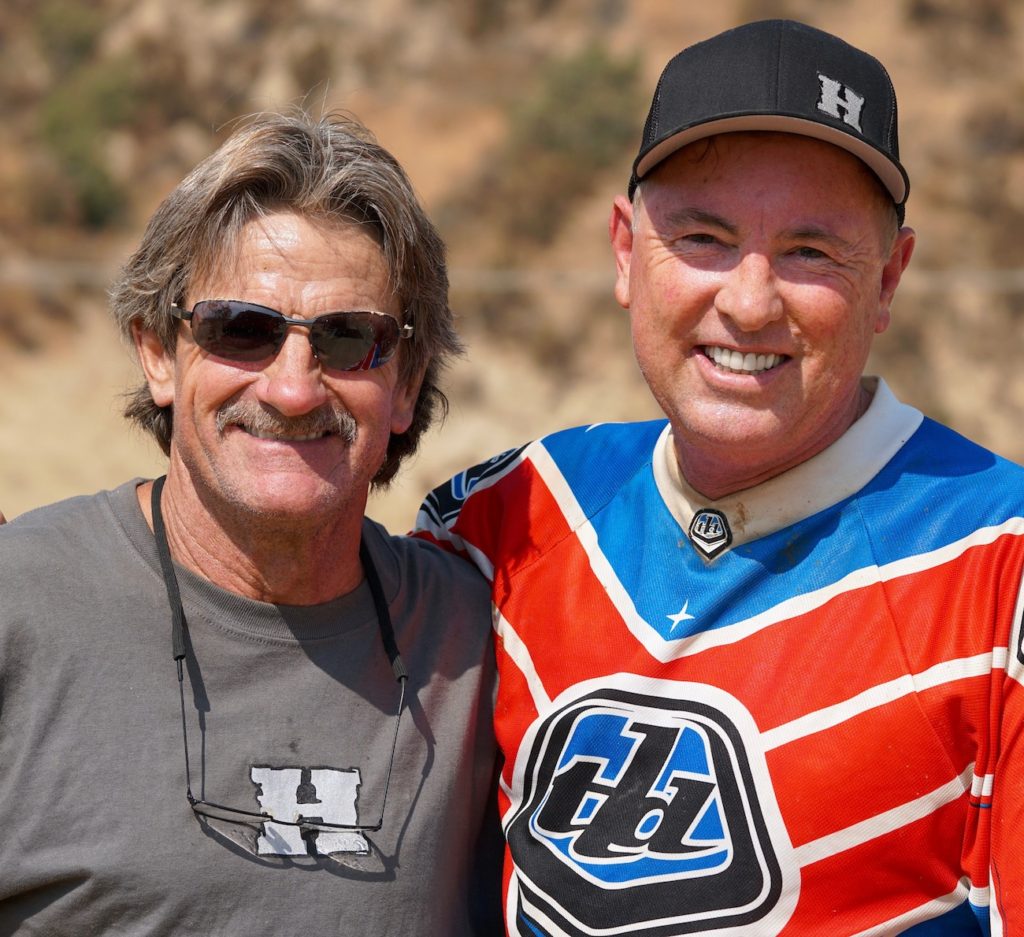
In addition to Broc on a Honda CR125, DG also had CR125 night racing specialists Gary Denton and Dave Taylor. This meant that DG could not just sit on its hands when it came to CR125 development. Despite all the back-door YZ125s/250s we were getting from Yamaha, we were still obligated to do plenty of future development of the 1975/76 CR125 engine package.
Story Index (Click on any title to read the episode)
Episode 1: Understanding The 70s SoCal Motocross Atmosphere
Episode 2: My Road Into Motocross
Episode 3: Getting a Foot in the Door
Episode 4: Reality in the Race Shop
Episode 5: Building a Race Team
Episode 6: Building the Team Bikes
Episode 7: Understanding the Goals of a Racing Business
Episode 8: The DG Front Office
Episode 9: The Competition
Episode 10: Painting the SoCal Racer’s Atmosphere
Episode 11: From Mechanic to I.T. Before There Was I.T.
Episode 12: A Few Words About Engine “Formulas”
Episode 13: Mechanic Buddies
Episode 14: 1976 Turning Points at DG
Episode 15: Facing the “Race-Gas” Era
Episode 16: The Retail Chamber Birthplace
Episode 17: The Mammoth Motocross Classic
Episode 18: The DG/Saddleback Launching Pad
